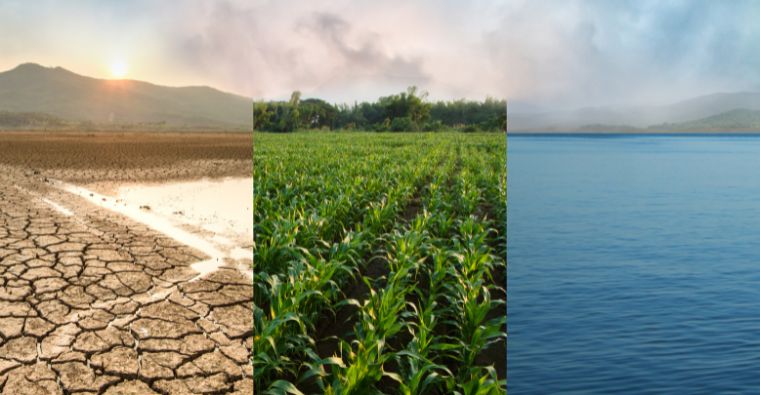Rising Temperatures
Impact on Species Distribution: Many species are moving towards higher altitudes or latitudes in response to increasing temperatures. For example, some bird species are migrating earlier in the spring, and fish are shifting to cooler waters.
Heat Stress: Higher temperatures can cause heat stress in plants and animals, affecting their growth, reproduction, and survival rates. Coral reefs, for instance, are experiencing bleaching events due to prolonged exposure to elevated water temperatures.
Melting Ice and Sea Level Rise
Polar Regions: The Arctic and Antarctic are warming at more than twice the global average rate, leading to significant ice melt. This threatens polar species such as polar bears and penguins that depend on ice for hunting and breeding.
Coastal Habitats: Rising sea levels are inundating coastal habitats, including mangroves, salt marshes, and estuaries. This not only affects the species that inhabit these areas but also the human communities that rely on them for protection against storm surges and as sources of food.
Changing Precipitation Patterns
Droughts: Increased frequency and intensity of droughts are transforming grasslands and savannas into deserts, leading to a loss of plant and animal species adapted to wetter conditions.
Floods: More intense rainfall and flooding events can destroy habitats, displace wildlife, and reduce the availability of food and nesting sites.
Ocean Acidification
Coral Reefs: Increased CO2 levels are causing ocean acidification, which weakens the calcium carbonate structures of coral reefs. This makes them more susceptible to erosion and less able to support the diverse marine life that depends on them.
Marine Species: Acidification also affects the shell-building processes of marine organisms such as mollusks and some plankton species, disrupting marine food webs.
Habitat Fragmentation
Migration Barriers: Climate change-induced habitat fragmentation creates barriers to the migration of species, limiting their ability to move to more suitable environments. This is particularly problematic for large mammals and migratory birds.
Isolated Populations: Fragmented habitats can lead to isolated populations, reducing genetic diversity and making species more vulnerable to extinction.
Impact on Forests
Forest Fires: Higher temperatures and prolonged droughts are increasing the frequency and severity of forest fires, destroying vast areas of forest habitat and releasing large amounts of carbon into the atmosphere.
Pest Infestations: Climate change is also facilitating the spread of pests and diseases that attack trees, such as the mountain pine beetle, which has devastated millions of acres of forests in North America.
Effect on Freshwater Ecosystems
Temperature Changes: Rising temperatures are affecting the thermal stratification of lakes and rivers, impacting the species that live in these waters. Cold-water fish such as trout and salmon are particularly vulnerable.
Water Availability: Changes in precipitation and increased evaporation are reducing water levels in freshwater ecosystems, affecting the species that depend on these habitats for survival.
Adaptation and Mitigation Strategies
To mitigate the impacts of climate change on natural habitats, several strategies can be employed:
Protected Areas: Expanding and effectively managing protected areas can help preserve critical habitats and provide refuges for species.
Restoration Projects: Habitat restoration projects, such as reforestation and wetland restoration, can help rebuild ecosystems and enhance their resilience to climate change.
Wildlife Corridors: Establishing wildlife corridors can facilitate the movement of species between fragmented habitats, allowing them to migrate in response to changing conditions.
Sustainable Practices: Promoting sustainable land-use practices and reducing deforestation can help maintain habitat integrity and reduce carbon emissions.
Climate-Resilient Infrastructure: Building infrastructure that takes into account future climate scenarios can reduce the impact on natural habitats and human communities.




Comments (0)